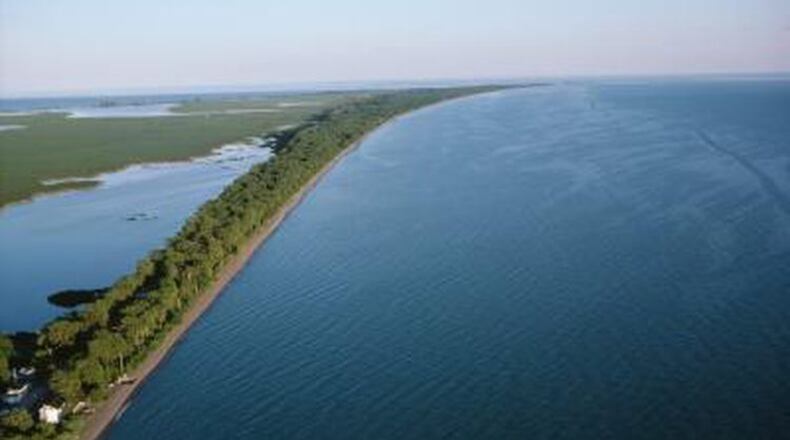The Great Lakes Restoration Initiative, launched in 2010, aims to clean up the Great Lakes, reduce the nutrient runoff that contributes to the growth of algal blooms and help control the spread of invasive species.
Ohio lawmakers had initially thought that the dollars would be reduced dramatically, from $300 million to $10 million. But the budget released by Trump’s administration early today calls for total elimination of the program.
Several in Congress, including GOP Sen. Rob Portman had condemned the idea of a severe cutback to Lake Erie cleanup. In a statement early Thursday, Portman called the initiative “a successful public private partnership” that has helped both the economy and the environment. He said a recent study found that the initiative’s work generates more than $80 billion in benefits in health, tourism, fishing and recreation.
“I have long championed this program, and I’m committed to continuing to do everything I can to protect and preserve Lake Erie, including preserving this critical program and its funding,” he said. He and other Great Lakes lawmakers, including Sen. Sherrod Brown, wrote the administration earlier this month expressing concerns about cuts to Great Lakes funding.
RELATED: Trump 2018 budget takes aim at dozens of government programs
“Taking an ax to the Great Lakes Restoration Initiative will cost Ohio jobs and jeopardize public health by putting the well-being of Lake Erie at risk,” said Brown. “I remember seeing how polluted Lake Erie was as a kid, and we can’t pull the rug out from under our cleanup efforts when we’ve made such progress. My colleagues in the Ohio delegation and I will not stand for a budget that zeros out this critical program.”
Former northeast Ohio Congresswoman Betty Sutton, a Democrat who left her post as administrator of the Saint Lawrence Seaway Development Corp. in January and is now running for governor, said, “The Great Lakes hold one-fifth of the world’s fresh water — they are a unique and precious endowment, an economic driver for our state and an environmental wonder that must be protected. For President Trump to turn around and defund the Great Lakes Restoration Initiative is a betrayal of the very people of the states that helped elect him. Trump has decided to hurt Ohioans, undercut our economy, and pollute our water, instead of fulfilling his promise to create jobs.”
Credit: DaytonDailyNews
Trump is, however, not the first to propose reducing spending for the Great Lakes project. President Barack Obama in his FY 2016 and FY 2017 budgets proposed a smaller $50 million cut for the initiative; both times, Congress restored the cuts.
“The budget returns the responsibility for funding local environmental efforts and programs to state and local entities, allowing EPA to focus on its highest national priorities,” Trump’s budget said.
In August 2014, residents of Toledo whose water source was Lake Erie were urged not to drink the water for three days because of algal bloom contamination.
“President Trump’s budget proposal is a betrayal for our health and environment,” said Scott Slesinger, legislative director of the Natural Resources Defense Council. “It would walk America away from cleaner air, safer drinking water, a stronger economy and a healthier planet. It deserves to be dead-on-arrival in Congress. And it will be.”
But Trump’s budget said, “The budget returns the responsibility for funding local environmental efforts and programs to state and local entities, allowing EPA to focus on its highest national priorities.”
The budget would cut EPA funding by 31 percent, also eliminating money to clean up Maryland’s Chesapeake Bay and wiping out more than 50 EPA programs, including Energy Star.
Overall, it would dramatically reduce discretionary spending in order to increase defense spending by some $54 billion. It would also eliminate the Appalachian Regional Commission, a federal-state-local partnership aimed at serving as a regional economic development agency. The agency, established by Congress in 1965, includes Ohio and 12 other Appalachian states and aims to invest in business development in the region; in worker education and training; and in infrastructure.
OTHER POLITICAL NEWS
Texting while driving may lead to higher fines in Ohio
New law allows handguns on workplace parking lots
About the Author
